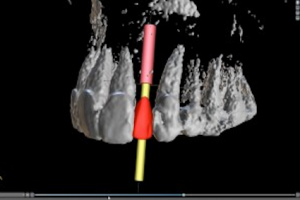 What do the top dental implant dentists do to get remarkable results? Whether it’s the top presenters on major dental implant symposiums or clinicians recognized by many of their peers as the leading dentists in their field, they share one common theme in their secret to success: Digital Implant Dentistry.
What do the top dental implant dentists do to get remarkable results? Whether it’s the top presenters on major dental implant symposiums or clinicians recognized by many of their peers as the leading dentists in their field, they share one common theme in their secret to success: Digital Implant Dentistry.
Digital implant dentistry is the cross-utilization of cone beam CT scan, an optical scan of patient’s teeth, and 3-D computer-assisted planning to diagnose, plan, and deliver cad/cam designed and fabricated implant-supported restorations. It is the only way to precisely and safely place the implants in the appropriate position and achieve the expected functional and esthetics results.
As reported in our book, The Painful Dental Implant, the majority of dental implant complications are related to poor planning, execution, and inexperienced providers. Placement of dental implants without proper planning and the use of surgical guides carries the highest risk of complications. While the use of surgical guides made on conventional models (i.e. analog dentistry) improves the treatment, they lack consideration for the anatomy of the underlying bone and proximity of important structures such as nerves and sinuses. The risks for failure and complications are significantly higher with the analog approach.
With a digital workflow, the entire surgical and restorative treatment plans are designed BEFORE any procedures are performed on patients. Also, patients can complete their treatment in less time and visits with great accuracy and remarkable results.
The benefits of digital implant dentistry include:
- Improved surgical and restorative diagnostics
- Precise positioning of dental implants
- Improved accuracy of surgical and restorative plan
- Determine appropriate implant width and length
- Eliminate risks of injuries to nerves
- Eliminate risks of injuries to adjacent teeth
- Eliminate penetration into maxillary sinus (for implants in the back of the upper jaw
- Fewer visits for patients
- Shorter treatment time
The digital approach in implant dentistry is a collaborative process between the surgeon who places the implants and the restorative dentist who restores them. The virtual treatment plan is shared among the team of doctors and the lab technician to assure absolute control of the treatment and its outcome.
